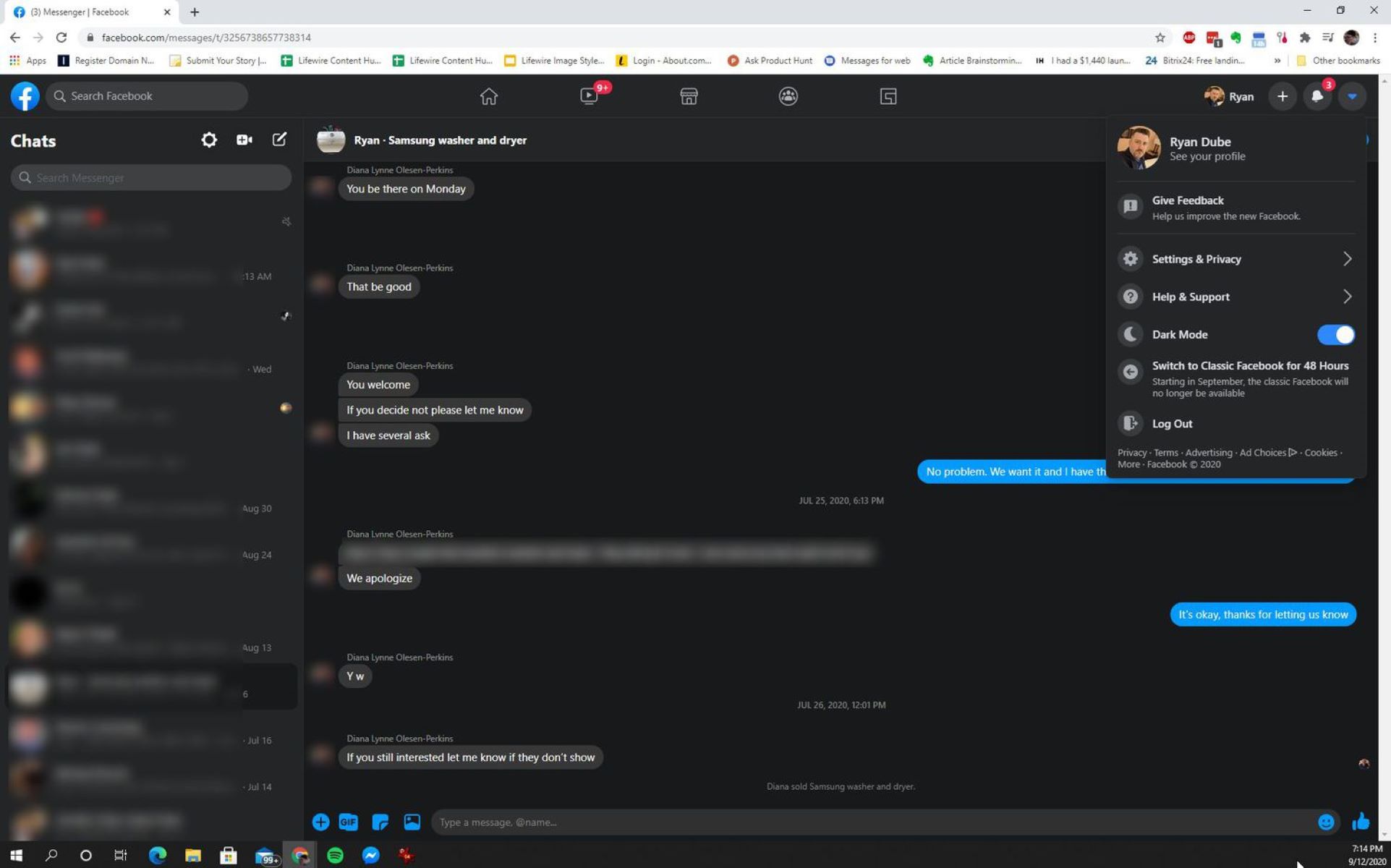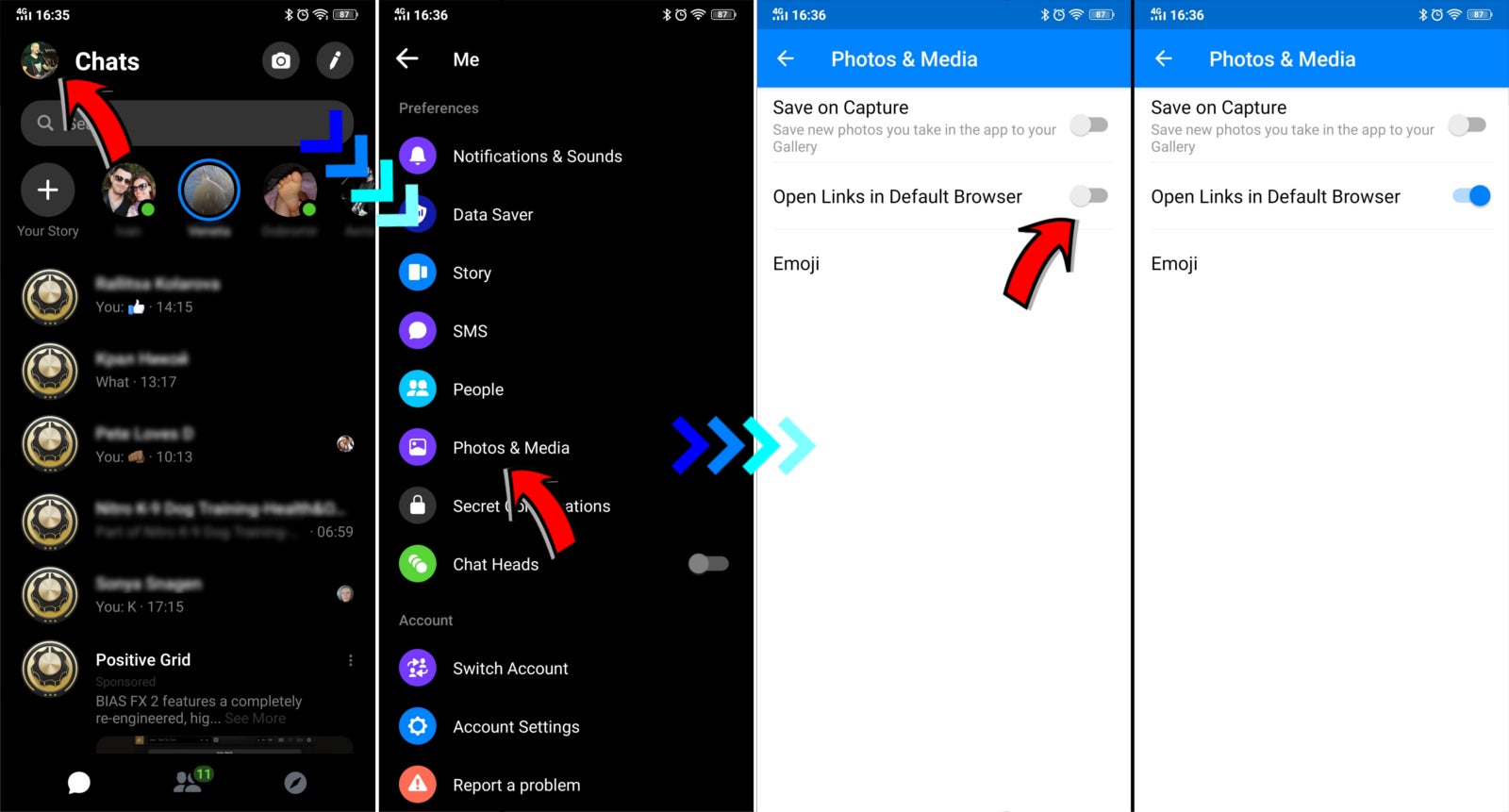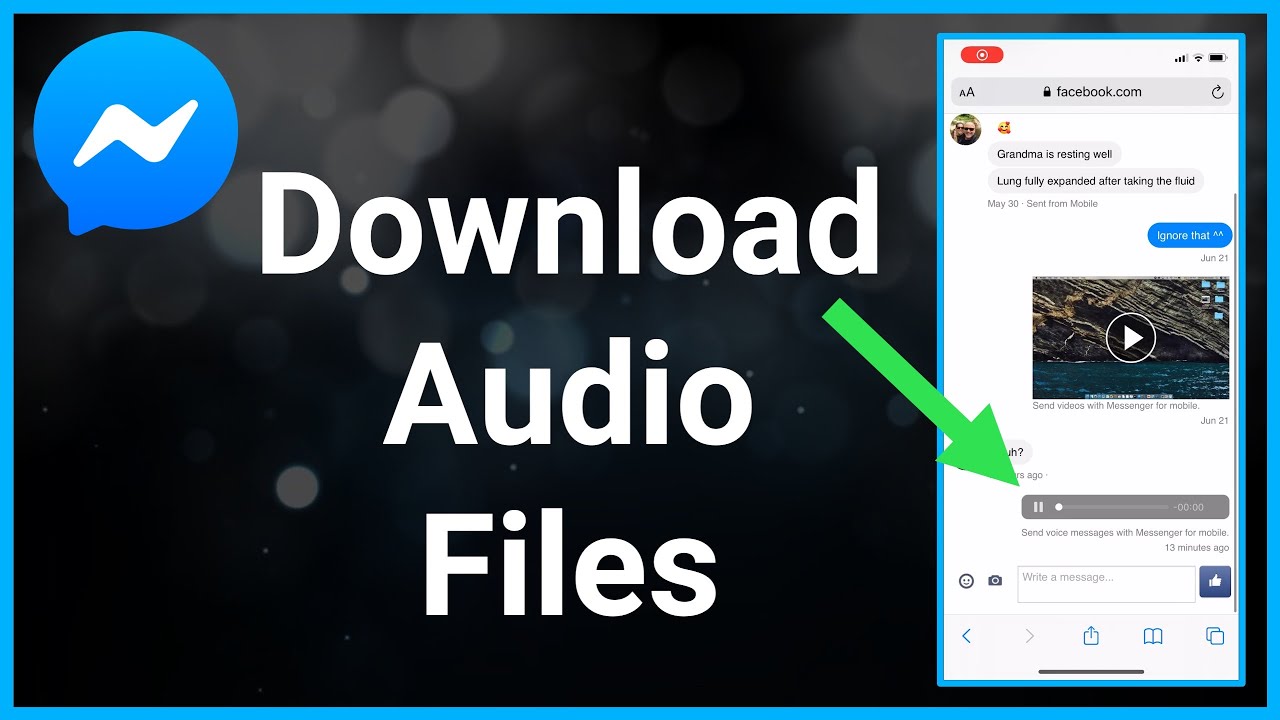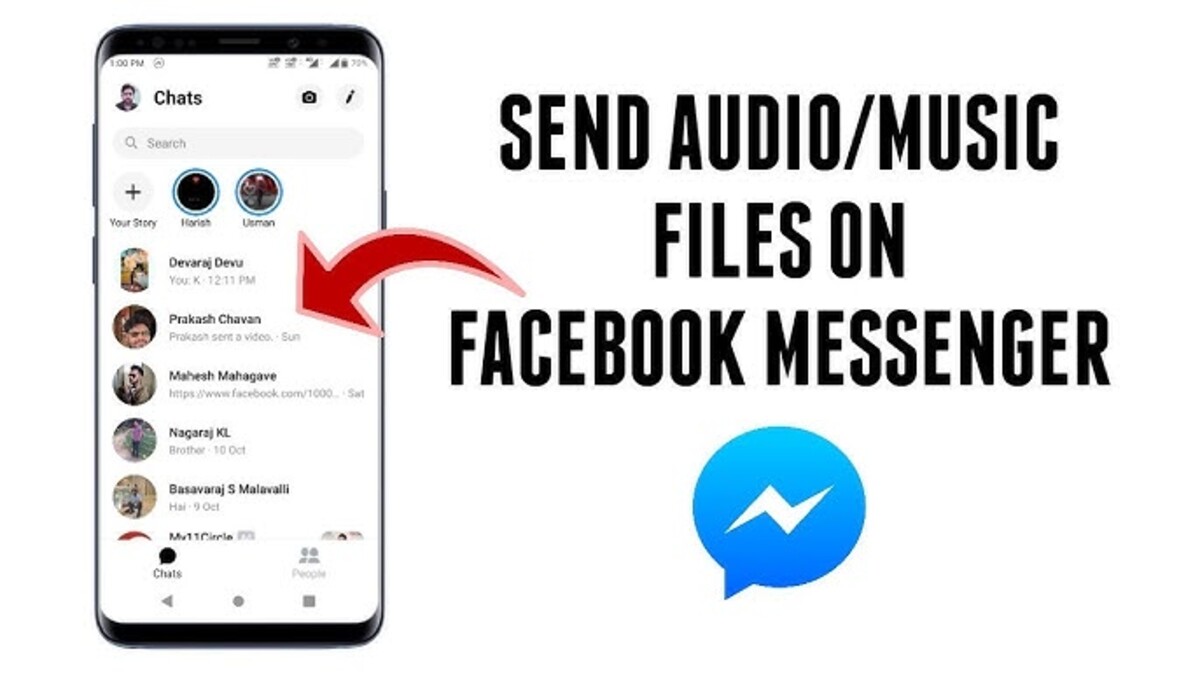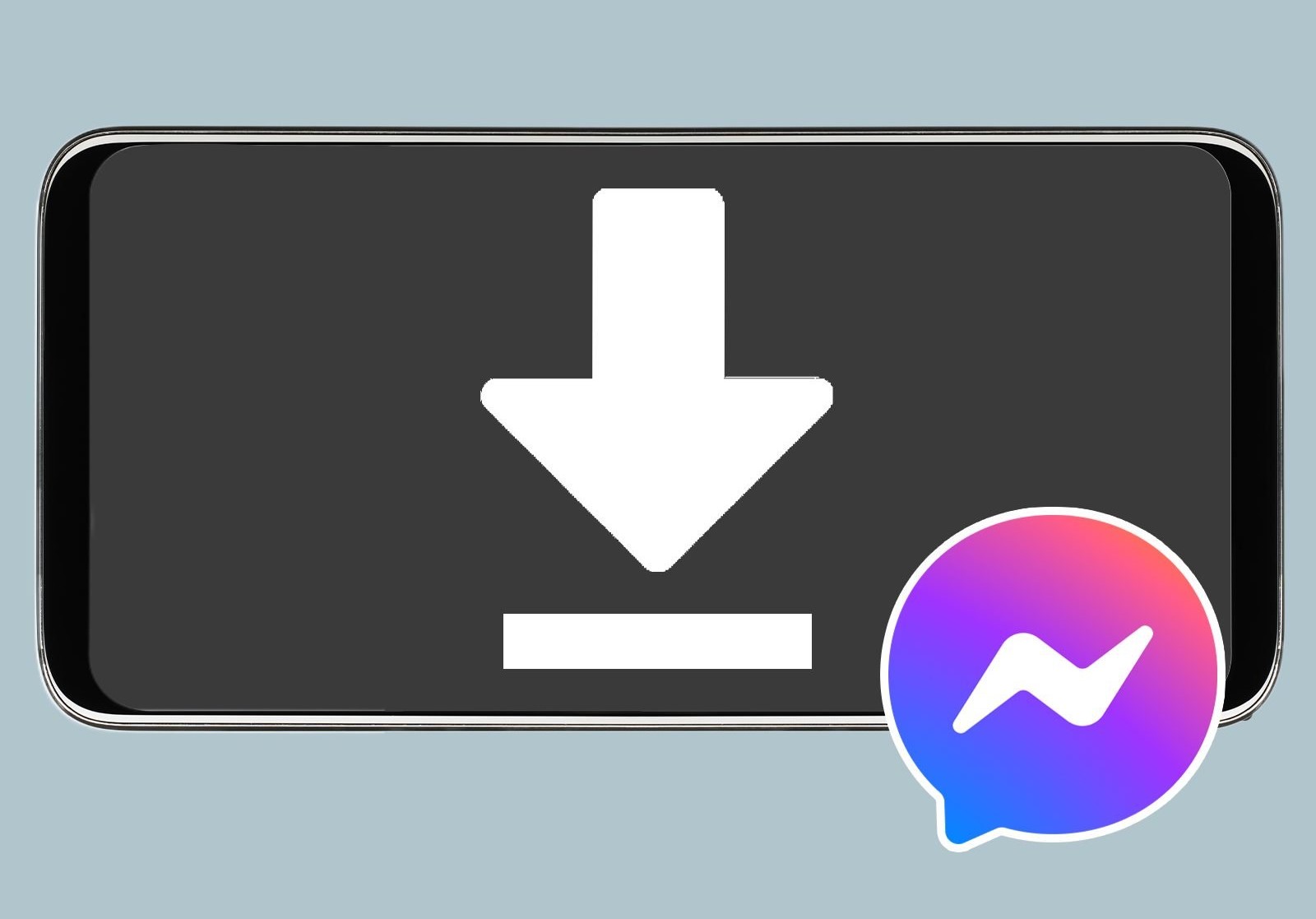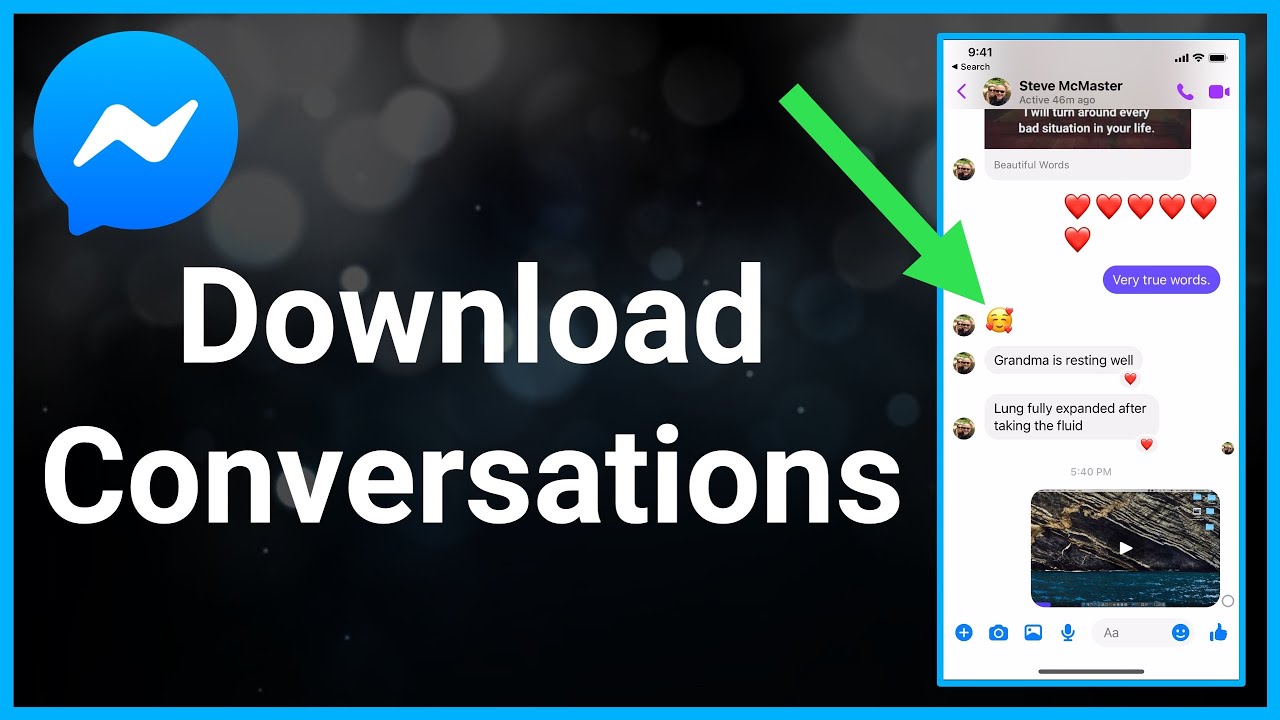Introduction
Messenger, developed by Facebook, is a popular messaging platform used by millions of people worldwide to connect with friends, family, and colleagues. While Messenger is commonly accessed through the mobile app, many users may not be aware that they can also use the Messenger service in a browser. This opens up a whole new realm of possibilities for accessing and managing your messages.
In this article, we will explore the various methods you can use to open Messenger in a browser, providing you with the flexibility to stay connected even when you’re away from your mobile device. Whether you prefer the convenience of a desktop computer or you simply find it easier to type on a larger keyboard, accessing Messenger in a browser can offer a seamless and efficient messaging experience.
So why should you consider using Messenger in a browser? Besides the advantages of a larger screen and a physical keyboard, using Messenger on a browser allows you to have multiple conversations open simultaneously, making it easier to switch between chats. Additionally, you can integrate Messenger with other browser-based productivity tools, such as email and calendar applications, to streamline your communication and workflow.
In the following sections, we will discuss several methods that you can use to open Messenger in a browser. Whether you prefer accessing Messenger through the official Messenger website, using Facebook’s website, installing the Messenger desktop app, or utilizing a Messenger browser extension, we’ve got you covered. Let’s dive in and explore each method in detail.
What is Messenger?
Messenger is a messaging platform developed by Facebook that allows users to send text messages, make voice and video calls, share photos and videos, and engage in group conversations. Originally designed as a standalone app for mobile devices, Messenger has evolved into a versatile platform that can be accessed through a browser.
With Messenger, you can stay connected with friends, family, and colleagues, regardless of their geographical location. It offers a variety of features that enhance communication, including the ability to add reactions to messages, send voice recordings, and share files and documents. Messenger also provides a vast range of stickers, emojis, and GIFs, allowing users to express themselves in creative and fun ways.
One of the key advantages of Messenger is its seamless integration with Facebook. As Messenger is developed by the same company, it is deeply integrated into the Facebook ecosystem, making it easy to connect with your Facebook friends and access their profiles directly from the Messenger platform. Additionally, Messenger allows users to sync their contacts, ensuring that their conversations and connections are easily accessible across devices.
In recent years, Messenger has expanded its capabilities by introducing features such as Messenger Rooms, which enables users to create virtual meeting spaces for video conferences, and Messenger Kids, a version specifically designed for children to communicate in a safe and controlled environment. These additions have made Messenger a versatile and inclusive platform, catering to the diverse needs of its user base.
Whether you’re looking to catch up with old friends, collaborate on a project with colleagues, or plan an event with a group of people, Messenger provides a convenient and user-friendly interface to facilitate communication. With its constant updates and advancements, Messenger continues to evolve, offering new features and improved functionality to enhance the messaging experience for its users.
Why use Messenger in a browser?
While using the Messenger mobile app is a common way to stay connected, there are several compelling reasons why you might want to consider using Messenger in a browser:
- Convenience of a larger screen: Accessing Messenger in a browser allows you to enjoy a larger screen size, providing a more immersive and comfortable chat experience. This can be particularly beneficial when typing long messages or viewing media files.
- Multi-tasking capabilities: Using Messenger in a browser enables you to have multiple conversations open simultaneously, making it easier to switch between chats and stay organized. This is especially useful for individuals who regularly engage in multiple conversations at once.
- Integration with other browser-based tools: When accessing Messenger in a browser, you have the flexibility to integrate it with other productivity tools, such as email clients or calendar applications. This allows you to streamline your communication and workflow, as you can easily switch between different platforms without the need to constantly switch devices.
- Accessibility across devices: By using Messenger in a browser, you can access your messages from any device with an internet connection, including desktop computers, laptops, and tablets. This ensures that you can stay connected even when you don’t have immediate access to your mobile device.
- Improved typing experience: Typing on a physical keyboard is often faster and more accurate than typing on a touchscreen. When using Messenger in a browser, you can take advantage of your computer’s keyboard, allowing you to compose messages more efficiently.
- Expanded functionality: Some versions of Messenger for browsers offer additional features not available in the mobile app, such as the ability to send voice messages, access chat history more easily, or customize the interface to suit your preferences.
Overall, using Messenger in a browser provides you with added flexibility and convenience in managing your messages, allowing you to stay connected and engaged with your contacts in a way that best fits your needs and preferences.
How to open Messenger in a browser
Opening Messenger in a browser is a simple process that gives you access to your messages from a desktop or laptop computer. There are several methods you can use to open Messenger in a browser, depending on your preferences and the tools available to you. Let’s explore each method:
- Method 1: Using the Messenger website: The most straightforward way to open Messenger in a browser is by accessing the official Messenger website. Simply open your preferred web browser and search for “Messenger website” or go directly to “https://www.messenger.com”. Log in to your Facebook account if prompted, and you will be able to access your messages and engage in conversations.
- Method 2: Using Facebook’s website: If you already use Facebook, another option is to access Messenger through the Facebook website. Log in to Facebook using your credentials, and in the top right corner of the page, you will find a Messenger icon. Clicking on this icon will open a sidebar with your recent messages and conversations.
- Method 3: Using the Messenger desktop app: If you prefer a dedicated desktop application, you can download and install the Messenger desktop app. Visit the Messenger website or search for “Messenger desktop app” to find the official download page. Once installed, you can open the Messenger app on your computer and log in to access your messages.
- Method 4: Using a Messenger browser extension: Some web browsers offer extensions that allow you to access Messenger directly from your browser toolbar. Check if your browser has a Messenger extension available and install it. Once installed, you can click on the Messenger icon in your browser toolbar to open a separate window or sidebar with your messages.
Choose the method that best suits your preferences and the tools available to you. Whether you prefer accessing Messenger directly through the official website, integrating it with your Facebook account, using a dedicated desktop app, or utilizing a browser extension, you can enjoy the convenience of managing your messages on a larger screen and taking advantage of additional features available in a browser-based environment.
Method 1: Using the Messenger website
One of the most straightforward ways to open Messenger in a browser is by using the official Messenger website. This method allows you to access your messages and engage in conversations directly through your web browser. Here’s how you can do it:
- Open your preferred web browser on your computer.
- In the search bar, type “Messenger website” or go directly to “https://www.messenger.com”.
- If you’re not already logged into your Facebook account, you will be prompted to do so. Enter your email address or phone number and password to log in.
- Once logged in, you will be redirected to the Messenger website, where you can view your messages, start new conversations, and manage your conversations.
- On the left side of the screen, you will see your list of recent conversations. Click on a conversation to open it and view the messages.
- To start a new conversation, click on the “New Message” button on the top left corner of the screen. Enter the name of the person or group you want to message and select them from the suggestions that appear.
- In the conversation window, you can type your message in the message box at the bottom and press Enter or click the Send button to send the message. You can also send photos, videos, and other files by clicking on the respective icons.
- To customize your Messenger experience, you can click on the gear icon at the top left corner and explore the available settings and options.
The Messenger website offers a user-friendly interface that closely resembles the mobile app. It allows you to access your messages, participate in group chats, share media files, and engage in conversations seamlessly on your computer. By using the Messenger website, you can enjoy the convenience of a larger screen and a more comfortable typing experience.
Remember to log out of your Messenger account when you have finished using it, especially if you are on a shared or public computer, to ensure the security of your account and messages.
Method 2: Using Facebook’s website
If you already use Facebook, another method to open Messenger in a browser is by accessing it through the Facebook website. This allows you to conveniently access both Facebook and Messenger functionalities from a single platform. Here’s how you can do it:
- Open your preferred web browser and go to the Facebook website, which is “https://www.facebook.com”.
- Log in to your Facebook account using your email address or phone number and password.
- Once logged in, you will be directed to the Facebook home page. Look for the Messenger icon in the top right corner of the page, identified by a speech bubble symbol.
- Click on the Messenger icon, and a sidebar will appear on the right side of the screen, displaying your recent messages and conversations.
- You can click on a conversation to open it and view the messages. It will expand the sidebar, allowing you to have a larger display of the conversation.
- To start a new conversation, click on the “New Message” button at the top of the sidebar. Enter the name of the person or group you want to message and select them from the suggestions.
- In the conversation window, you can type your message in the input field at the bottom and press Enter or click the Send button to send the message. You can also attach photos, videos, and other files by clicking on the respective icons.
- Explore the various options and features available in the sidebar, such as managing notifications, creating group chats, or searching for specific conversations.
By accessing Messenger through the Facebook website, you can easily switch between Facebook and Messenger functionalities, keeping your social media activities and messaging conveniently organized in one place. This method provides a seamless integration of communications within the Facebook ecosystem.
Remember to log out of your Facebook account when you have finished using it, especially if you are on a shared or public computer, to ensure the security of your account and messages.
Method 3: Using the Messenger desktop app
If you prefer a dedicated desktop application for accessing Messenger on your computer, you can use the Messenger desktop app. This method provides a more focused and standalone messaging experience, similar to using the mobile app but on a larger screen. Here’s how you can use the Messenger desktop app:
- Open your web browser and search for “Messenger desktop app” or visit the Messenger website to find the official download page.
- Download and install the Messenger desktop app compatible with your operating system (Windows or macOS).
- Once the installation is complete, launch the Messenger desktop app on your computer.
- If you’re not already logged in, enter your Facebook account credentials (email/phone and password) to sign in to your Messenger account.
- Once logged in, you will be greeted with the familiar Messenger interface, allowing you to view your messages, engage in conversations, and access all the features available on the mobile app.
- Click on a conversation to open it and view the messages. You can scroll through the chat history, send new messages, and participate in group conversations.
- To start a new conversation, click on the “New Message” button or the “+” icon, usually located at the top of the app. Enter the name of the person or group you want to message and select them from the suggestions.
- Type your message in the input field at the bottom of the conversation window and press Enter or click the Send button to send the message. You can also attach files, such as photos or videos, by clicking on the respective icons.
- Explore the various options and settings available in the Messenger desktop app, such as configuring notifications, managing your profile, or adjusting the appearance of the app to your liking.
By using the Messenger desktop app, you can enjoy a focused messaging experience tailored for desktop computers. It offers the convenience of accessing Messenger directly on your desktop without the need to open a web browser. You can have Messenger running in the background, receive notifications, and quickly respond to messages without distractions.
Remember to log out of your Messenger account when you have finished using it, especially if you share your computer with others, to ensure the security and privacy of your account and messages.
Method 4: Using a Messenger browser extension
Another method to open Messenger in a browser is by using a Messenger browser extension. These extensions provide a convenient way to access and use Messenger directly from your browser’s toolbar or menu. Here’s how you can use a Messenger browser extension:
- Open your web browser and go to the extension store or marketplace specific to your browser. Popular web browsers such as Google Chrome, Mozilla Firefox, and Microsoft Edge have their own extension repositories.
- Search for “Messenger extension” in the extension store or marketplace.
- Review the available options and select the Messenger extension that is compatible with your browser.
- Click on the “Add” or “Install” button next to the selected extension to install it in your browser.
- Once the installation is complete, you will see the Messenger icon or button appear in your browser’s toolbar or menu.
- Click on the Messenger icon to open a separate window or sidebar that displays your recent messages and conversations.
- In the Messenger window, you can click on a conversation to open it and view the messages. You can also start a new conversation by clicking on the “New Message” or “Compose” button.
- Type your message in the input field and press Enter or click the Send button to send the message. You can also use the available buttons to attach files, stickers, or emojis.
- Explore the additional options and settings provided by the Messenger browser extension, such as notification settings, theme customization, or keyboard shortcuts.
Using a Messenger browser extension brings the convenience of accessing Messenger directly from your browser, eliminating the need to navigate to a separate website or application. It allows you to stay connected and engage in conversations without switching tabs or windows, providing a seamless messaging experience.
Remember to log out of your Messenger account when you have finished using it, particularly if you are using a shared or public computer, to ensure the security and privacy of your account and messages.
Conclusion
Opening Messenger in a browser has its advantages, offering a wider range of options and flexibility for managing your messages. Whether you choose to use the Messenger website, access it through Facebook’s website, install the Messenger desktop app, or utilize a Messenger browser extension, each method provides unique benefits to enhance your messaging experience.
Using Messenger in a browser allows you to enjoy the convenience of a larger screen, multi-tasking capabilities, and integration with other browser-based tools. It also provides improved typing experience and expanded functionality, empowering you to communicate more efficiently and express yourself creatively.
By following the steps outlined in this article, you can easily open Messenger in a browser, giving you the freedom to access your messages and conversations from desktop computers, laptops, or tablets. Experiment with the different methods and choose the one that best fits your preferences and workflow.
Whether you’re using Messenger for personal communication, collaborating on projects, or staying connected with friends and family, accessing it in a browser offers a convenient and seamless solution to manage your messages and stay connected wherever you are.
So, go ahead and try accessing Messenger in a browser today! Enjoy the benefits of a larger screen, improved productivity, and enhanced messaging capabilities that come with using Messenger outside of the traditional mobile app environment.







